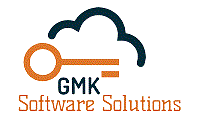To disrupt the market, beat the competition, and delight customers, you need innovative, enabling applications. However, creating differentiation, increasing efficiencies, and improving the customer experience can only be as good as the applications you use. We also live in an era where most companies have massive volumes of data but are unable to access hidden insights to drive innovation.
Leveraging our vast experience, we’ll help you become the data-driven organization you need to be to compete in the global economy. We’ll analyze your applications and data stores, and advise on how to re-architect applications and consolidate, process and visualize information to drive growth. We’ll help you realize the full potential of your data utilizing machine learning capabilities and analytics built into cloud-native data platforms efficient for unlocking valuable data analytics.
Optimizing efficiencies, increasing flexibility, reducing costs, and delivering rich user experiences, we’ll assess, rationalize, and plan the migration of your application portfolio to the optimal cloud-native, a hybrid destination with minimal risk.
Your Cloud Migration Checklist
To ease your transition to the cloud, we work off a comprehensive checklist that includes—but is not limited to the following items. As part of the process, we’ll tailor the list based on your IT strategy and enterprise architecture:
Identify existing cloud-based applications and strategy
-
Determine and prioritize workloads to be migrated to the cloud
-
Identify the strategy for each, i.e. rehost, re-architect, replatform, or retire/replace
-
Determine the destination environments required, i.e. public, private, hybrid, or multi-cloud
-
Identify the correct target environment for each workload incl. the public cloud providers if required
-
Perform cost and risk analyses for the migration
-
Formulate a security plan for migration and post-migration
-
Identify the skills and team (internal and external) needed to execute the migration
-
Communicate migration goals and assign roles and responsibilities
-
Create a migration plan including a roadmap and schedule
-
Develop a communications plan for updating stakeholders
-
Establish metrics and KPIs for the migration
-
Review all plans and analyses and make adjustments as needed










